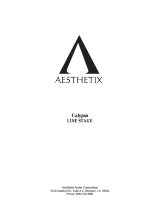
Release 1.0
E61 LED7 L50640-L2179-D670 DISOPT19-213AUWD/S365-2BQ8C.19213.071
E61 LED8 L50640-L2179-D670 DISOPT19-213AUWD/S365-2BQ8C.19213.071
E61 LED9 L50640-L2179-D670 DISOPT19-213AUWD/S365-2BQ8C.19213.071
E61 LED10 L50640-L2179-D670 DISOPT19-213AUWD/S365-2BQ8C.19213.071
E61 D4 L50640-D5123-D670 DISDIODERB161M-20BQ8C.1R002.08Q
E61 D5 L50640-D5124-D670 DISDIODEPMEG2020EJBQ8C.2R002.A8F
E61 D601 L50640-D5124-D670 DISDIODEPMEG2020EJBQ8C.2R002.A8F
E61 DZB1 L50640-D3142-D670 DISDIODEZEN6.06-6.33VBQ8C.6R205.03F
E61 D2 L50640-D5125-D670 DISDIODE1PS79SB30BQ8C.R2004.A84
E61 D3 L50640-D5125-D670 DISDIODE1PS79SB30BQ8C.R2004.A84
E61 B1 L50640-C2149-D670 DISTRANSPEMH9NPNBQ8D.00009.010
E61 B3 L50640-C2167-D670 DISTRANSUMH10NNPNBQ8D.00010.01F
E61 B2 L50640-C2143-D670 DISTRANSBC807-40WPNPBQ8D.00807.A1K
E61 FN1 L50630-C1198-D670 DISTRANSFDG6303NBQ8D.06303.03K
E61 FP1 L50630-C1186-D670 DISTRANSFETFDC6306PBQ8D.06306.030
E61 FP3 L50630-C1186-D670 DISTRANSFETFDC6306PBQ8D.06306.030
E61 FP2 L50630-C1187-D670 DISTRANSFETFDC6506PBQ8D.06506.030
E61 U67 L50645-K280-Y420 FILSAW1842.5MHZSAFEH1GBQ6J.10151.001
E61 U68 L50645-K280-Y421 FILSAW942.5MHZSAFEH942MBQ6J.10152.001
E61 U66 L50645-K280-Y437 FILSAW1960MHSAFEH1G96FBBQ6J.10154.001
E61 EMI2 L50645-K280-Y453 FILLFA24-2A1A144MTBQ6J.10189.001
E61 EMI3 L50645-K280-Y453 FILLFA24-2A1A144MTBQ6J.10189.001
E61 EMI4 L50645-K280-Y453 FILLFA24-2A1A144MTBQ6J.10189.001
E61 EMI5 L50645-K280-Y453 FILLFA24-2A1A144MTBQ6J.10189.001
E61 EMI6 L50645-K280-Y467 FILLFB20-3D1E471MBQ6J.10189.011
E61 EMI7 L50645-K280-Y467 FILLFB20-3D1E471MBQ6J.10189.011
E61 IOTA L50610-U6243-D670 ICINTFTWL3025BZGMRBQ7A.03025.B0U
E61 SHJ2SL L50610-G6322-D670 ICCPUSH7327-DH6417327BQ7A.07327.00U
E61 G2 L50645-J4683-Y34 ICASICD751992AZHHRBQ7A.75199.A0U
E61 AND1 L50610-B6250-D670 ICLOGINL17SZ08XV5T2BQ7C.17085.090
E61 AND2 L50610-B6250-D670 ICLOGINL17SZ08XV5T2BQ7C.17085.090
E61 OR1 L50610-B6251-D670 ICLOGINL17SZ32XV5T2BQ7C.17325.09H
E61 BR13M L50610-B6252-D670 ICLOGISN74AVC1T45DCKRBQ7C.74145.09H
E61 BR32K L50610-B6252-D670 ICLOGISN74AVC1T45DCKRBQ7C.74145.09H
E61 BRRSTO L50610-B6252-D670 ICLOGISN74AVC1T45DCKRBQ7C.74145.09H
E61 AMP L50610-C6390-D670 ICANATPA2010D1YZFRBQ7D.02010.0K0
E61 U1 L50610-C6392-D670 ICANANUF2221W1T2GBQ7D.02221.07Y
E61 BLDRV L50610-C6288-D670 ICDCCONLM3501TLXBQ7D.03501.040
E61 LDO2CH L50610-C6423-D670 ICVRR5325K005B-TRBQ7D.05325.030
E61 U64 L50610-U6248-D670 ICSWITCHPLELMSP54CA-272BQ7D.054CA.D30
E61 PMIC L50610-C6394-D670 ICANABH6053GUBQ7D.06053.04U
E61 CHRIC L50610-C6395-D670 ICANAISL6292CCR3ZBQ7D.06292.070
E61 CODEC L50610-U6276-D670 ICAUDIOWM8955LSEFL/RBQ7D.08955.075
Technical Documentation
06/2006
TTD_Repair_L3 _Theory of Operation_E61_R1.0.pdf Page 5 of 33




















